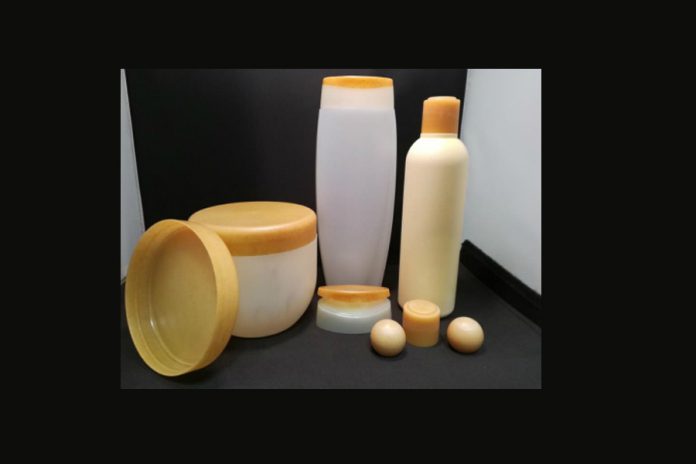A complete range of bottles, caps, jars and lids in a unique new bio-polymer from fully renewable resources is now available from Italian packaging manufacturer Capardoni. The company asserted that it is highly committed to protecting the environment and has funded the research and development of the new green substrate over many years, as one of several major environmental initiatives it has taken.
In what appears to be an industry first, a full product range can now be launched with bottles jars, caps and lids using packaging from sustainable plant sources by simply adding bio labels to the Capardoni bottles and jars. There are several distinguishing features to Capardoni’s bio polymer. Firstly, it is made from a special IP-protected combination of wood cellulose and sugar cane. This can be converted and molded in the same way as regular fossil fuel based PE to make any shape of bottle, jar or cap.
The natural color and texture of the substrate is an organic light brown, which either has a matt or shiny look, and immediately conveys its green credentials to the consumer without the use of masterbatch. It is also available as white or can be colored with masterbatch and is fully recyclable. Capardoni’s own Gorgonzola factory also contributes to the C02 reduction and clean manufacture of the product as the energy it uses is from the solar panels on its fully photovoltaic roof. This was another recent green initiative to make the factory self-sufficient in energy.
Finally, the company has embarked on a packaging weight reduction program to further reduce the energy, waste and cost. Sales manager Nello Cumani said, “We are proud to launch this new bio-polymer which demonstrates Capardoni’s commitment to the reduction of toxic emissions and the production of packaging that is sustainable, renewable and recyclable. Our ultimate goal is to meet the needs of the present without compromising the ability of future generations to satisfy theirs.”











